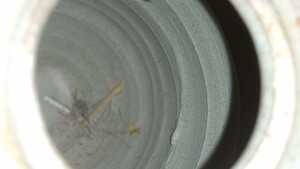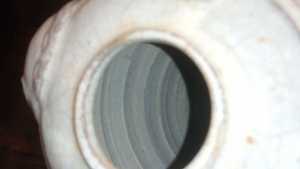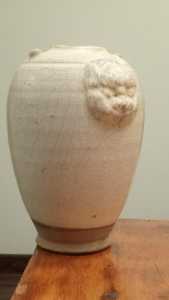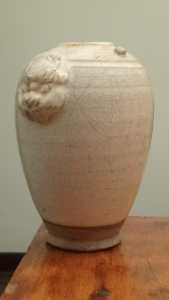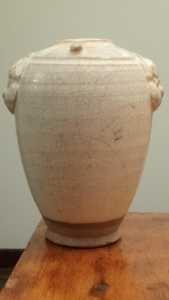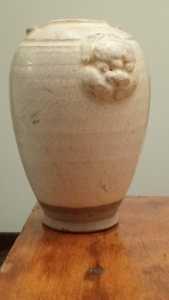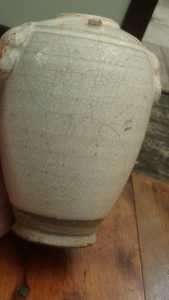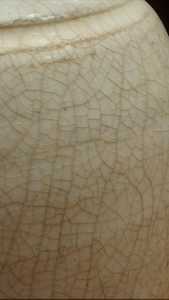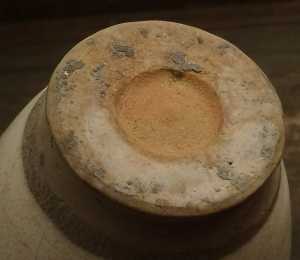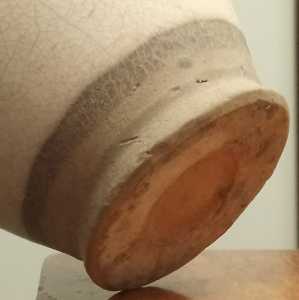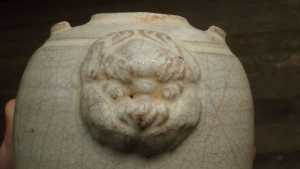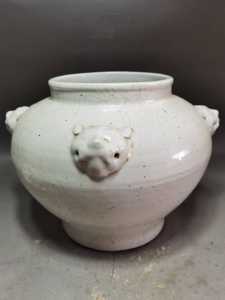The Chinese and Asian Art Forum. For Fans, Collectors and Dealers.
 Basic Rules For the BidAmount Asian Art Forum: Talk about whatever you want. You can even discuss and offer things that are for sale if they are authentic. Maximum image file size per post is 2 MB. Images of 700pxl x 700pxl are optimal if saved at a medium resolution. Be respectful of others and enjoy yourself. Click the YouTube link for a brief tutorial on using the forum. You can also EMBED Videos by cutting and pasting from You-Tube, Vimeo etc.
Basic Rules For the BidAmount Asian Art Forum: Talk about whatever you want. You can even discuss and offer things that are for sale if they are authentic. Maximum image file size per post is 2 MB. Images of 700pxl x 700pxl are optimal if saved at a medium resolution. Be respectful of others and enjoy yourself. Click the YouTube link for a brief tutorial on using the forum. You can also EMBED Videos by cutting and pasting from You-Tube, Vimeo etc.
NOTE: To post an item or add a new post, click open the category title from the FORUM LIST, and CLICK the Blue ADD TOPIC button.
Hello!
I picked this up in a thrift shop in Hamilton, Ontario a few years ago and have a few questions about it.
Mainly:
1) What is the reason for the two raised circular bumps on the top of the vase? (You can see similar bumps here  ) Or is it simply decoration?
) Or is it simply decoration?
2) I have the same question about the circular ring incised near the top of the vase? (I assume it was a stabilization ring that held some sort of lid in place? Maybe that's what the dots are for as well?)
3) Your best guess as to where/when it was made?
4) Looks like it was dipped into some kind of ink post firing, yes? (re: the dark staining below the glaze near the foot)
5) Did it have a purpose or was it just a pretty vase for display?
(Looks to be handmade, finger marks inside?)
Sorry for the poor quality images, I can upload better ones if there is any interest.
Have a great day everyone!
Thanks for looking!
I have looked through a couple of books and the little round things are referred to as " bosses" and He Li in Chinese Ceramics also called them "appliqué roundels."
I don't know when they first started appearing but in the Percival Collection there is a drum-shaped bowl from the Tang dynasty and it has a row of these around the top rim. Th e authors of the "Highlights of the Sir Percival David Collection" (Regina Krahl & Jessica Harrison-Hall) say the bosses on this piece suggest studs used to fasten an animal skin over an actual drum.
I imagine that they became a design element and served no actual purpose. Sometimes they are carved.
I can't really say anything about your vase or jar. I feel the lion (?) masks are a bit out of proportion and usually they give an object quite a simple elegant look which doesn't come across here. The lower part where you say it looks stained is not something I have seen before. It seems like there is a cross-over of styles and that always makes me a bit suspicious. I may be wrong, I am sure someone will say if that is the case.
Thanks for that, Julia!
Is this the drum shaped bowl you are referring to: https://www.britishmuseum.org/collection/object/A_PDF-182 ?
Vases were originally used to store things (I believe?), so the bosses right near the opening make sense.
The one thing that seems consistent with the bosses, design elements or not, is that they appear to only exist on ancient pieces. In other words, an outdated design element today.
I agree that the masks are comically large for the size of the vase.
In the vases defense, however, I am the world's worst photographer. It really is a beauty imho.
I remember when I saw it in the store and went home that night I could not stop thinking about it, so I raced back and grabbed it first thing the next morning. I will try to take and post some better pictures this evening.
If anyone has any resources on chinese stoneware footrims, I would love to see them.
Peter has a lot of great video content on footrims, but they all seem to be porcelain exclusive.
Lastly, the ink/stain/darker glaze appears to be an actual glaze... as it's crackled as well. Originally I wondered if it were some sort of primer glaze applied to the piece before coating it with a beige glaze? But then I learned how intentional crackling was created and wonder now if it were dipped after firing (which I would assume would risk cracking the vase completely in half?!)
That's the one; I find it an absolutely beautiful item!
I know that feeling of seeing something, not buying it but getting home and wishing I had! The horrible feeling of going back, wondering if someone else has grabbed it.
Maybe it isn't Chinese at all, but from elsewhere in Asia. Maybe someone else can help you identify it. If not, tomorrow I will get my He Li book out again and see if I can find a similar foot.
Hi Johnny,
I like this a lot, but can't really tell its age. I agree with Julia that the animal masque applique looks too big for its britches. You're correct that these masks were more popular in earlier times. The Western Jin, as an early example, were fans and had some large (though better proportioned and often carved) examples.

The incised line below the rim was originally used to control glaze, to keep from flowing and sticking at bottom. They remained as a decorative element long after better glaze/kiln control made them unnecessary.
If not modern, I'd guess your vase is at least in the style of a northern whiteware from the Six Dynasties, Sui or Tang periods. I wouldn't expect white-ware much earlier than that, and I wouldn't expect the masks or that vase's shape much later than that. That bi-shaped foot ring was common in the Tang, but I'm not sure how early it started.
The base clay looks orange and rough, almost like terra cotta. Is that right or maybe just the photo? Are those clumps of dirt stuck to the foot? Are they baked on or loose?
Some of the staining and wear on yours looks convincing, but that too can be faked. Hoping someone can shed more light,
Craig
I was just catching up on this thread and looking at the pictures again and I noticed that on the side there is a darker area where it looks like a crackle can be seen below where the glaze ends. I had always thought of crackle being a glaze aspect, not something in the paste itself. Can you guys educate me about this, because I'd like to have a better understanding of the construction. If you haven't already, I think you should send an inquiry Peter for his thoughts. If you do, let us know what he says.
I couldn't find anything helpful. Not all the bases are shown, but I looked as far as Ming and couldn't see anything with the technique Craig described or lion masks.
Maybe try some museums or as John suggests, ask Peter.
I know that feeling of seeing something, not buying it but getting home and wishing I had! The horrible feeling of going back, wondering if someone else has grabbed it.
Maybe it isn't Chinese at all, but from elsewhere in Asia. Maybe someone else can help you identify it. If not, tomorrow I will get my He Li book out again and see if I can find a similar foot.
Haha, horrible is one word for it! I guess it is a pretty horrible/frantic feeling... but it's one that I live for.
Thrifting "blind" (no smartphone/internet) is one of my favorite hobbies. I just walk the aisles, and try to look at things for what they really are, and decide if I like them or not.
It's a lot of fun doing it in Hamilton because it's a relatively old city (founded in the mid 1830s, but the French were in the area as early as 1699). Hamilton was also one of Canada's wealthiest towns in the early 1900s, there's plenty of nice old things being donated all the time.
Speaking of nice old things, I think I found a cracked-ice vase which might be from the late qing in the same store recently which I'll be posting to the forums here in a few days. 🙂
As to this vase not being Chinese, the possibility has crossed my mind more than once. A good friend of mine who spent time in Tibet and Nepal said that they thought it might not be Chinese either.
Those masks certainly look like foo lion faces to my untrained eye, though. Were there any other cultures that adopted/used the Foo Lion guardians?
Chinese or not, recent replica or not, it seems to be rare. I have searched google images up and down with every different combination of descriptors I can think of over the years since I've acquired it and I've never found a similar example. Google lens turns up nothing either. Nor have I seen anything similar in the hundreds of Peter's videos I have watched recently.
Hamilton is a pretty artsy town, though. So there's a real possibility it's just some art student's weekend project too.
Most art student pieces are made from poor quality clay that has no weight to it, however. They typically feel like they might chip if you so much as looked at them too hard. Or fly away if you sneezed. And there's usually a childish signature on the base as well. 😛
Hi Johnny,
I like this a lot, but can't really tell its age. I agree with Julia that the animal masque applique looks too big for its britches. You're correct that these masks were more popular in earlier times. The Western Jin, as an early example, were fans and had some large (though better proportioned and often carved) examples.

The incised line below the rim was originally used to control glaze, to keep from flowing and sticking at bottom. They remained as a decorative element long after better glaze/kiln control made them unnecessary.
If not modern, I'd guess your vase is at least in the style of a northern whiteware from the Six Dynasties, Sui or Tang periods. I wouldn't expect white-ware much earlier than that, and I wouldn't expect the masks or that vase's shape much later than that. That bi-shaped foot ring was common in the Tang, but I'm not sure how early it started.
The base clay looks orange and rough, almost like terra cotta. Is that right or maybe just the photo? Are those clumps of dirt stuck to the foot? Are they baked on or loose?
Some of the staining and wear on yours looks convincing, but that too can be faked. Hoping someone can shed more light,
Craig
So make that 2 votes for the oversized masks issue!
I was trying to figure out how one could determine if the masks were carved or not?
I would assume that both the ring around the top and the bosses/bumps were carved, or at least helped along with some sort of carving tool. There are striations around the outside of the piece as well, below the ring around the top, which seem to sit perfectly horizontally when the piece is standing upright. I'll try to post a decent picture of what I am talking about in a later post.
(My only reason for mentioning that is because I thought that perhaps the piece was made larger than you see, and portions of it were carved away to reveal the masks, ring, and bosses? Or is that a pointless amount of work? I don't know anything about potting, but I plan on taking a few classes with an experience potter rather soon!)
Those striations could easily be made by the potters fingers as well however, as you can see similarly sized rings around the inside where it was shaped.
I have a feeling that the masks were made separately from the piece however and applied to the vase while it was still wet, as you can see the bottom lip of one of the lions is a bit "smushed in" ... as if the mask was pressed into the vase by hand a bit too hard ... kind of looks like he is smoking a cigarette or has his tongue out of something 😛
However, if you look closely at the ring edges where the touch the mask, the depth of the rings disappears completely, so... perhaps the masks were carved?
Speaking of masks, I LOVE the detail on the ones you posted by the way! Scary stuff! What would that pot have been used for do you figure?
As for the base of my vase, it's more orange in the center which has been scooped out a bit yes. Whatever is stuck to the foot, I assume you mean the blackened pieces, they're just as much a part of the vase as anything else. They're definitely baked on.
The base is rough to the touch, entirely unglazed, but also fairly smooth at the same time, almost like it has been handled/moved around for a very long time.
I agree that the wear does look convincing. Just from my own experience with picking up random pieces of antique pottery over the years, it looks and feels like it has at least 100 years of age to it.
I started collecting english staffordshire pottery, as that is what you most often find here in Hamilton, so I know a wee bit about how old pottery should feel. However, nobody is faking staffordshire plates and tureens afaik, so I do not have much of any experience with faked age techniques.
Thank you kindly for your input Craig! I'll do some more research on Whiteware and Tang/Sui pieces before I bother Peter about this.
@johnshoe, I am curious about the same thing! The staining seems to be a glaze itself as it is indeed crackled.
@julia (again!) Thank you so much for taking the time to look through your book! I really do appreciate it! I'll keep looking as well, and once I feel as though my abilities have been exhausted I will definitely be asking Peter for his expert advice.
Here are some better quality pictures I promised the other day: https://imgur.com/a/mm77Wph
It does look old and I would have bought it, too. Let us know if you find out anything.
You're quite welcome, sir! My wild speculation is always free of charge, and certainly worth every penny. 😉
Thanks for the new pictures. It does look old. And that's good that the dirt on the bottom is baked on as opposed to loose; another sign of real age. Modern fakers often glue fake dirt/sand/gunk to pieces to make them seem older.
The large jar I'd posted was a very common form from the Warring States period. I've heard them called "storage jars" and, as opposed to any burial, ceremonial or decorative role, I think they were simply utilitarian.
For the applied face masks, determining if carved or molded comes down to how sharp the curves and lines are. In both cases, the masks are finished and then stuck (with wet clay) to the pot, then glaze is applied, then it's fired. The glaze can cover over the seam where the mask and pot meet, making it look as if they were made in one piece. Looking at yours, my hunch is that it was molded.
Now, at risk of sending you on an increasingly wild goose chase, may I make another suggestion? The new pictures have me thinking it could actually be Japanese! It's the shape more than anything, or rather the proportions. This could also (possibly) explain the size of the mask.
Hopefully someone with more knowledge will be able to help. I'd love to hear back if you find out anything!
Craig
The shape, the glaze and the biscuit fits with Qingbai ware but those oversized lion heads are highly unusual. It's nice piece but not of high value. Just my two cents.
There was a picture of the base but I didn't bookmark the listing since I'm not interested in it myself. Unfortunately.
Thanks for visiting "The BidAmount Asian Art Forum | Chinese Art"
If you sell on eBay, or have a shop feel free to post images and descriptions and links.
Check back often for discussion about the latest news in the Chinese art and antique world. Also find out about the latest Asian art auctions at Sotheby's, Christie's, Bonhams and Tajans.
Auction results for: fine porcelain, ceramics, bronze, jade, textiles and scholar's objects. As well as Japanese, Thai, Vietnamese and other Asian cultures.
Thank you,
Peter Combs
Topics and categories on The BidAmount Asian Art Forum | Chinese Art
Kangxi vases, Kangxi dishes and chargers, Kangxi ritual pieces, Kangxi scholar's objects, Qianlong famille rose, Qianlong enamels, Qianlong period paintings, Qianlong Emporer's court, Fine porcelain of the Yongzheng period. Chinese imperial art, Ming porcelain including Jiajing, Wanli, Xuande, Chenghua as well as Ming jades and bronzes.
The BidAmount Asian Art Forum | Chinese Art
A free Asian art discussion board and Asian art message board for dealers and collectors of art and antiques from China, Japan, Korea, Thailand, Cambodia, Vietnam and the rest of Asia. Linked to all of the BidAmount Asian art reference areas, with videos from plcombs Asian Art and Bidamount on YouTube. Sign up also for the weekly BidAmount newsletter and catalogs of active eBay listing of Chinese porcelain, bronze, jades, robes, and paintings.
The art of calligraphy - and for the ancient Chinese it certainly was an art - aimed to demonstrate superior control and skill using brush and ink. Calligraphy established itself as one of the major Chinese art forms during the Han dynasty (206 BCE - 220 CE), and for two millennia after, all educated men were expected to be proficient at it.
The Museum’s collections of Asian art span nearly five millennia and encompass the cultures of China, the Himalayas, India, Japan, Korea, and Southeast Asia. In 2007, the Museum launched an initiative to create dedicated galleries for the collection, beginning with a gallery for the arts of Korea ...
Chinese art is full of symbolism, in that artists typically seek to depict some aspect of a totality of which they are intuitively aware.
China Online Museum is the finest online museum of Chinese art. It features Chinese calligraphy, painting, ceramics, bronzes, carving, and other artworks.
Chinese Ceramics & Works of Art. Overview Upcoming auctions Contacts Auction results ... Christie’s sales of Chinese ceramics and works of art showcase centuries of Chinese history. Held throughout the year in London, New York, Paris and Hong Kong, they attract a wide audience of collectors and connoisseurs vying for pieces as diverse as ...
Explore Asian Art Week. Contact the Specialist Department. Chinese Paintings ... Senior Specialist, Head of Sale. [email protected]. Tel:+1 212 641 5760. Bid in-person or online for the upcoming auction:Fine Chinese Paintings on 10 September 2019 at New York. Bid in-person or online for the upcoming auction:Fine Chinese Paintings on 10 ...
Discover an abundance of must-see art from all corners of a vast continent at Christie’s NY Asian Art Week. From contemporary classical and Chinese paintings to works with exemplary provenance from the Art Institute of Chicago, our Rockefeller Paza galleries will be full of ancient treasures and contemporary masterworks in a salute to the vibrant arts of Asia.
Sold to benefit The Art Institute of Chicago’s Asian Art Acquisition Fund, the sale features 84 lots with a focus on Ming and Qing porcelains, and offers a rare insight into the taste for collecting Chinese ceramics and works of art in the Midwest from the end of the 19th century through the 1980s. Highlights include two Wanli wucai garlic-head vases, a Qianlong mark and period, blue and ...
Specialist, Chinese Paintings, Christie's London Dr Malcolm McNeill is a Specialist in Chinese Paintings at Christie’s, based in London. He previously worked as an assistant curator of the Chinese collections and the Victoria and Albert Museum in London, as a researcher at the British Museum, and as a translator and tour guide at the National Palace Museum in Taipei.
The Christie's Education 2020 Conference: The Chinese Art Market 18 Jun 2019 Christie’s Education is delighted to announce our first international academic conference in Asia which will take place in Hong Kong from 26-27 November 2020 at the Hong Kong Convention and Exhibition Centre and will run in parallel with Christie’s Hong Kong Autumn Auctions.
The summer Chinese Art sale in Hong Kong will feature works of art from several private collections, including Qing porcelains and textile from the collection of the legendary Chinese art dealer A. W. Bahr (1877–1959), fine gilt bronze Buddhist sculptures from an old Hong Kong collection, an East Asian collection of Qing dynasty wine cups and jades, and a Japanese collection of Song ceramics ...
Sotheby's Chinese Works of Art Department holds two auctions each year in London, New York, Hong Kong and Paris.
Chinese Art - View Auction details, bid, buy and collect the various artworks at Sothebys Art Auction House.
With more than 340 Chinese works of art dating from the Neolithic to the Republic periods, highlights of this sale include a selection of Qing Imperial monochromes from the collection of Arnold and Blema Steinberg, early ceramics from the Art Institute of Chicago and Chinese porcelain and works of art from the collection of Henry Arnhold.
Results: Sotheby's Asia Week achieved $52.4 million in six strong auctions, exceeding pre-sale estimates. With 76.5% of lots sold and 60.3% of lots surpassing high estimates, the Asian art sales at Sotheby's indicate continued collector interest in the finest works of art from China, India and and the Himalayas.
Today's sale of Important Chinese Art will proceed as planned with sessions at 10 AM and 2 PM EDT. Sotheby's will be monitoring the weather conditions throughout the day and will be available to coordinate alternative bidding options should conditions make it difficult for clients to attend the auction in person.
Bonhams Chinese Art department is renowned for offering the finest works of art representing the richness and breadth of China's artistic heritage, particularly Imperial porcelain, white and spinach green jades, cloisonné and Buddhist art. Specialised international auctions are held globally, including London, Hong Kong and San Francisco.
Bonhams : Chinese Works of Art We use cookies to remember choices you make on functionality and personal features to enhance your experience to our site. By continuing to use our site you consent to the use of cookies. Please refer to our privacy and cookie policies for more information.
Bonhams Fine Art Auctioneers & Valuers: auctioneers of art, pictures, collectables and motor cars. We use cookies to remember choices you make on functionality and personal features to enhance your experience to our site. By continuing to use our site you consent to the use of cookies. ... Chinese Art (US) General enquiries
Bonhams : Fine Chinese Art We use cookies to remember choices you make on functionality and personal features to enhance your experience to our site. By continuing to use our site you consent to the use of cookies. Please refer to our privacy and cookie policies for more information.
Bonhams Fine Art Auctioneers & Valuers: auctioneers of art, pictures, collectables and motor cars Bonhams : Asian Art We use cookies to remember choices you make on functionality and personal features to enhance your experience to our site.
Bonhams are international auctioneers of fine Chinese and Japanese art. We specialise in rare Imperial and Export Chinese ceramics and works of art, as well as Japanese ceramics, fine and decorative works of art from the Neolithic Period to the 20th century. View on map
Bonhams Fine Art Auctioneers & Valuers: auctioneers of art, pictures, collectables and motor cars. We use cookies to remember choices you make on functionality and personal features to enhance your experience to our site. By continuing to use our site you consent to the use of cookies. ... Asian Art Bonhams. Work. 22 Queen St.
